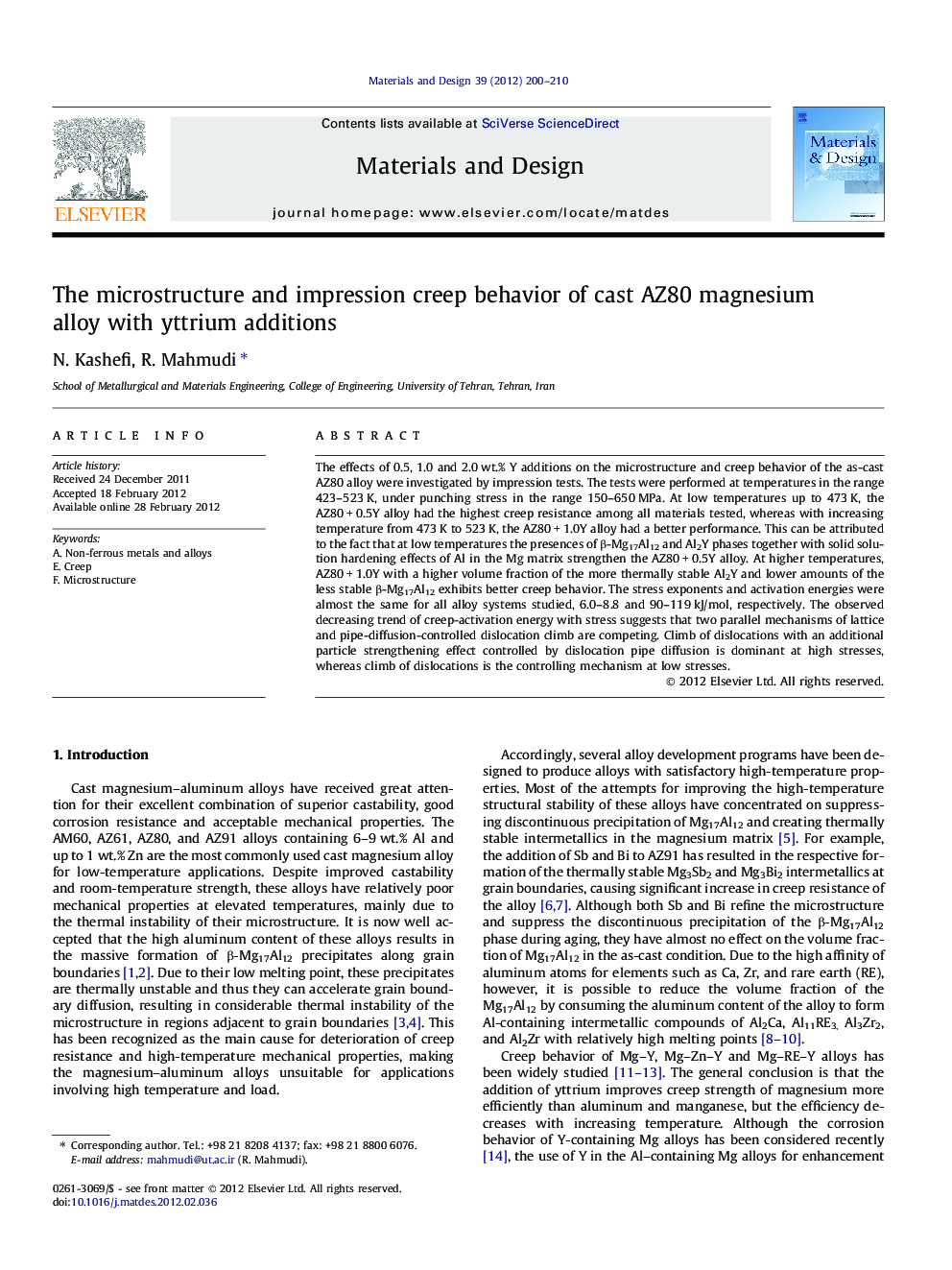| Article ID | Journal | Published Year | Pages | File Type |
|---|---|---|---|---|
| 830665 | Materials & Design (1980-2015) | 2012 | 11 Pages |
The effects of 0.5, 1.0 and 2.0 wt.% Y additions on the microstructure and creep behavior of the as-cast AZ80 alloy were investigated by impression tests. The tests were performed at temperatures in the range 423–523 K, under punching stress in the range 150–650 MPa. At low temperatures up to 473 K, the AZ80 + 0.5Y alloy had the highest creep resistance among all materials tested, whereas with increasing temperature from 473 K to 523 K, the AZ80 + 1.0Y alloy had a better performance. This can be attributed to the fact that at low temperatures the presences of β-Mg17Al12 and Al2Y phases together with solid solution hardening effects of Al in the Mg matrix strengthen the AZ80 + 0.5Y alloy. At higher temperatures, AZ80 + 1.0Y with a higher volume fraction of the more thermally stable Al2Y and lower amounts of the less stable β-Mg17Al12 exhibits better creep behavior. The stress exponents and activation energies were almost the same for all alloy systems studied, 6.0–8.8 and 90–119 kJ/mol, respectively. The observed decreasing trend of creep-activation energy with stress suggests that two parallel mechanisms of lattice and pipe-diffusion-controlled dislocation climb are competing. Climb of dislocations with an additional particle strengthening effect controlled by dislocation pipe diffusion is dominant at high stresses, whereas climb of dislocations is the controlling mechanism at low stresses.
► Addition of 0.5–2%Y to the AZ80 alloy improved creep resistance. ► AZ80 + 0.5Y and AZ80 + 1Y showed the highest creep resistances at low and high temperatures, respectively. ► Higher creep resistance was due to the solid solution hardening of Al and formation of the stable Al2Y compound. ► The low stress creep mechanism was climb of dislocations. ► The high stress creep mechanism was dislocation climb with additional particle strengthening.
